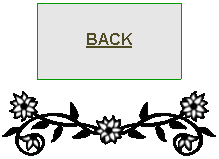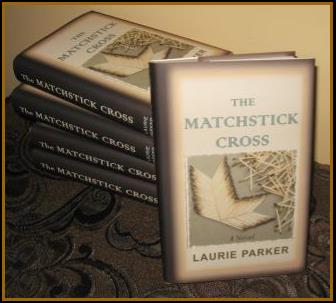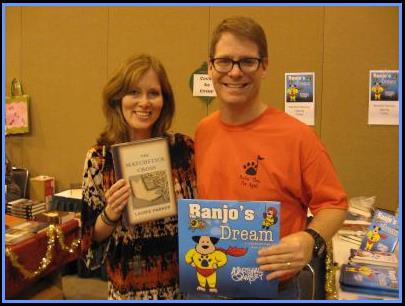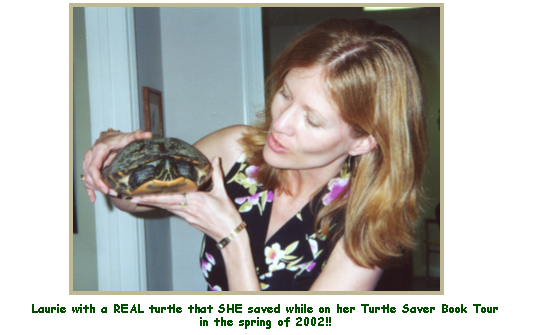|
PRESS RELEASE The Matchstick Cross Mississippi Author/Illustrator Laurie Parker’s FIRST NOVEL
Short Description: In 2004, New York City-based interior designer Celia Friday returns to her native Mississippi to clear out a storage unit full of boxes from her recently-deceased mother’s attic. Accompanying her on the trip is her business partner and best friend, Huey LaFleur, who has come along to help with the task, provide comic relief, and experience the Deep South for his first time ever. Recollections from Celia’s life in New York, where she has often been criticized by “Yankees” for her state’s racist past, are juxtaposed with flashbacks to her high school days, when she was the only white girl on an otherwise all-black basketball team. Humorous anecdotes of her hapless dating life, accounts of harrowing childhood experiences in a church where she struggled with bullying and proselytism, hilarious hometown characters, huge secrets kept, heartbreak, and a hint of the mystical are all masterfully woven into a life story that will make the reader laugh, cry, remember when, and wonder.
Southern sentiment, seventies nostalgia, and conversations about the insignificant with her gay best friend help flavor this saga of a single woman’s sorrows, successes, and spiritual seeking. The Matchstick Cross is a tale of journeying back, of sorting through memories, of un-boxing things long-stored, and of trying to make sense of it all.
Bible school crafts, Elvis, catalpa worms, “Muskrat Love,” macramé, self-tanner, local TV commercials, Bo Derek braids, love bugs, Nabs, Opryland, Arbor Day trees at school, Butterick patterns, “World’s Finest Chocolate” fundraisers, and Dark Shadows and Zoom are just a few of the fun references!
(Yonder Dove Press; Starkville, Mississippi; September 2013) – Mississippi wordsmith and collage artist Laurie Parker, author and illustrator of the beloved children’s rhyming favorites Everywhere in Mississippi, The Turtle Saver, A for Angels, and others, has demonstrated the strength of the writing side of her seventeen-year career as an author by releasing her first novel—as in a book of fiction for adults! Those who have followed her work throughout the years, but whose children and/or grandchildren have outgrown her books, can now sample her prose!
“I’ve written thirteen books, yet I feel a bit like a first-time author now that I’m releasing a novel. Which I did completely as a way to get back at people for not liking to read,” she adds kiddingly. “Seriously,” the writer continues, “it was inspired by a disheartening trend I’ve been witnessing in recent years as a children’s book author. Folks don’t read like they used to. People come into my booth at events where I am selling my artwork and books, they pick up my children’s books, open them, and immediately upon seeing that they have more than three words of text per page, they shut them and put them down. I’ve been observing reactions to books for seventeen years now, and it is evident that an increasingly large number of people are turned off by the prospect of having to actually read! I’ve seen enough would-be customers closing the book and actually making the comment, ‘Oh, it has words in it,’ to be able to recognize when my children’s books are being shunned for that reason. I’ve wanted to respond, ‘YES, it has words. It has to be READ! It’s A BOOK. Do you want your child to be smart or stupid when he/she grows up?’ ”
Parker says that this book is also her way to counter and “strike out” against texting, video gaming, Twitter, Facebook, and other such addictive activities that are damaging literacy and replacing reading (“or anything constructive or mind-enriching”) as an activity. She says she purposely chose to NOT water down the vocabulary, either. Says the life-long lover of words and language, “Our society is in trouble when the channel that calls itself The Learning Channel serves up shows like Here Comes Honey Boo-Boo. What is anyone learning these days?” The writer also says she thinks that the so-called “smart” phone is an ironic name—smart phones essentially leading to dumber owners, as they replace the working human brain. “But,” she adds, “if someone uses his or her smart phone while reading my book to conveniently look up a ‘big’ word—well, then—that’s a WORTHWHILE use of technology!”
The author says that due to an increasingly less-literate society’s dismissive response to her word-crafting on her last several children’s titles, she had toyed with the idea of “caving” and simply releasing a picture book with either no words, or very few. Her unique collage illustrations would lend themselves to a beautiful book with nothing but pictures. But she decided to rebel, and go the opposite direction. “My career in children’s books started with the words part—the writing part. Barney McKee of Quail Ridge Press agreed to publish my first book SOLELY on my ability as a writer; he didn’t care for my artwork. I love to write, and always have, and I decided to ‘re-invent myself’ and show that I can also write in prose—not just rhyme. Releasing a novel seemed like a good way to celebrate turning fifty in 2013, too. It’s probably the most counterintuitive thing I could have done: no one wants to buy my children’s books anymore because they have ‘too many words,’ and I am putting out a product with no pictures and pages and pages of nothing BUT words. And I depend on book sales for my income. Call me crazy!”
The self-employed artist/writer says she never imagined or thought about attempting a novel until the year 2011. Says Parker, “I just didn’t consider it ‘my bag.’ But once I started toying with the idea, I decided I wanted to do it, if for no other reason, than to prove to myself I could.” So in August of 2011, the Starkville native and resident says she came up with a premise pretty-much right off the bat. However, her impending heavy schedule of fall art shows and book signings wouldn’t allow her to begin actually putting anything more than scribbled skeleton notes on paper at that time. Once that busy autumn and pre-Christmas show season was over, she immediately went into work on the re-illustration of her first book, Everywhere in Mississippi, which she re-released as a self-published “Sweet Sixteen Edition” in 2012. And by the time she was through with that—it was “show-time” once again. So it was early 2013 before she could start on The Matchstick Cross in earnest.
The author states that the story part, and how it would all tie in, came to her very easily and readily in her head, and that the only thing hard about it was just physically getting it onto paper. As with her children’s books, she first wrote everything out long-hand, in pencil. She handwrote two, sometimes three, drafts of each chapter. “Physically writing and then typing was the only laborious part for me; I never struggled with plot, or what could happen next, etc. Writer’s block was never an issue—not for one second. But I definitely had writer’s cramp! The story was always coming way faster in my head than my hand could write! Then, I had to type it after that—of all things! Not ever having had typing in high school, just that I handwrote and then ALSO two-finger typed a 512-page manuscript feels like a major life accomplishment!” Parker managed to complete a few chapters in late summer 2012, but she did ninety percent of her novel between January and May of 2013. She says she really could have used another three months for “tweaking,” and some “time off” from the book before finalizing, but that wasn’t possible because of her need to get it out for the 2013 fall retail season. She was hard-pressed to release it by then in order to sell it for profit to offset her having done no other work but the book for the first five months of the year. “I have to sell handmade items to bring in my income; if I don’t have any made—there’s no way to make money to pay bills except from books. I took off from producing any art merchandise to write this book. So I put myself into a situation where I had to get it out in order to get an immediate financial return with it at my 2013 autumn shows.”
The Matchstick Cross is a story that she believes will make people laugh AND cry. Parker says she is certain that it is going to ruffle some feathers, because it delves into the topics of race and religion. “Having received hate mail before for doing children’s books (because someone’s town wasn’t in a story, or because I informed someone I am not a publisher and can’t read his manuscript), I am experienced with human behavior toward those who are published, and I feel ready for pretty much anything with this novel.” The author says that she was even able to capitalize on some of her early experiences as an author to develop situations for her story.
One of many themes in her story is race relations in Mississippi. Parker says she has long had a theory that if you want a novel to be successful, then make it about negative stereotypes in Mississippi when it comes to racism. “I used to say that jokingly—years ago, before my first children’s book even came out—that if you want a major publisher to publish your book, then the sure-fire method is to write about something racist in Mississippi, and they will both publish it and see it made into a movie.” She says that her “springboard” for the book came when she decided to test that theory. “So I started out there—with something bad happening in Mississippi—something that has to do with race, but then, I decided to give that hackneyed theme a slight twist. I grew up mostly in the seventies, and my experience was not the one so popular in the literature world of having a black maid who raised me. My family didn’t have a maid period, and only a very few of my friends had one—and even then, not one who raised them, but who came to clean. MY Mississippi experience was one of having black teachers, coaches, principals (as in figures we looked UP to!)—and classmates—in an integrated school system. So I went with the premise of someone FROM Mississippi moving up north and constantly hearing from people who didn’t grow up in the South about how racist her home state is. But all the while, the main character in the story, who is, like me, a product of integrated schools in Mississippi in the seventies, is the one who has actually had relationships with black people back home, while all of the critical, political-correctness-policing Northerners by whom she gets confronted went to all-white schools, and/or came from predominantly white areas.”
Parker says that from that point, the story took on a life of its own, and went in directions she hadn’t anticipated it venturing. “It ended up having a romance, which definitely wasn’t planned, and it also ended up delving into spiritual matters—and very heavily in places. There is a pretty decent helping of Scripture quoted in The Matchstick Cross,” Parker remarks. She says that although she initially toyed with testing her notion about getting picked up by a big publisher because the book had something about race relations, she quickly dropped that fantasy because the book became about so much more. So she decided to self-publish it, as she has her recent children’s books. “Submitting to publishers and waiting on responses could take several years. Because I had to get a product out there quickly for financial reasons, I didn’t have that luxury. Besides, I know enough about the business from already having been snubbed for years by ‘the critics and experts’ in both the literary and visual arts to know I would have been collecting rejections anyway,” she laughs. “Moreover, the book ‘went spiritual’ on me as I wrote, and the same publishers who would maybe favor a book because it has a racial incident in Mississippi probably wouldn’t be as keen on the Bible verses referenced throughout! They also would likely frown on several minor incidents in the story that address politics...because the characters don’t express a popular-with-Hollywood-or-main-stream-media view.”
The Matchstick Cross is set in the year 2004. Parker explains that she chose that year for a very specific reason, namely, it is pre-Hurricane Katrina. “I wanted to situate part of my story on the Mississippi Coast—the one Mississippians once knew—before it was destroyed. The fact that New Orleans was all the media talked about after that hurricane was deeply painful to many Mississippians, so with this book, I chose to ‘remember.’ ” Parker did so by having her main character, Celia Friday, have an aunt and uncle whose home is on Beach Boulevard in Biloxi. Celia lives with them some while in college, and is actually engaged to someone on the Coast at one point in the story.
Although “set” in 2004, much of the story is actually flashbacks—to that time on the Mississippi Coast, to when the main character first moved to New York City, to her memories of a man she fell in love with there, to a childhood made painful by both the death of her father when she was eight and bullying she encountered in church, and to her days on a high school basketball team. Parker says the bullying part of the story is somewhat unique because although some of it takes place at school, most of it occurs at church. The protagonist is treated as an outcast there by her peers, and the first time she ever feels part of a group and a sense of belonging is when she becomes the “token white” on an otherwise black girls’ basketball team in high school.
Parker states, “I know human nature, and I have no doubt that people (especially those from my hometown) are going to assume that things in my story are based on real people or events. They might try to guess on whom I am basing a character. But the characters in the story from Celia Friday’s hometown are strictly fiction. I based them on human nature and human tendencies, not actual people.” Says Parker, “Readers will note that I never mention the name of Celia’s hometown in the story, but I imagine many will try to make it into the town in which I, the writer, actually grew up. There’s a character in the story named Lucy Flowers. She’s a big gossip. She represents the way I know some people will respond to the events in my book—they are going to try to read something into them about Laurie Parker. The protagonist is an interior designer and artist and I made her a childhood craft enthusiast. I knew I could write about that in a believable way, because I have also been into art and creating my entire life. Because readers who know me will recognize me in that ‘crafts-y’ angle, they may speculate that other parts of the story are autobiographical. But it’s called FICTION! The KEY events and premises are from my imagination. I had to dream up stuff to have a decent story!”
Parker says she had a blast doing just that—making up stuff. “I especially relished coming up with names for characters. I’m a huge Andy Griffith fan and aficionado, and one of the things I believe makes that show so endearing is how they so often ‘name drop.’ So in my story, if I mentioned the main character’s third grade teacher, I also gave her a name—even if I were only mentioning her in passing. I had fun looking through the phonebook for good surnames at times! I wanted the extensive use of names to give the story a ‘gossipy’ feel—to make it seem more authentic. I also strove to achieve believability in characters by making them say some pretty petty things at times, as people do,” she laughs. She says that writing a novel was a wonderful outlet for her highly-imaginative side. She also says that there is a surprise of sorts near the conclusion of the story that even came as a surprise to her. “I had everything mapped out from the git-go, but there is one incident that I didn’t dream up on my own exactly. That is to say, the idea of it came to me in a ‘sudden flash’—in a way that was different than the creation of the rest of the story. I actually dismissed it when it first occurred to me as ‘too cheesy,’ but ultimately, I couldn’t reject it, because it seemed inspired. So it became part of the story, too.”
Parker says that all in all, doing a “big person” book was just as enjoyable, if not more so, than writing her rhyming children’s books. She says that her beloved pastime of “crafting with words” which she always used on those was also a crucial part of the novel-writing process for her. She states that putting together a novel likewise felt similar to creating her magazine-paper collage artwork—in that coming up with her story involved recombining familiar “pieces” in unique ways to create a new picture. “Had I known how much fun writing a novel would be, I would have done it a long time ago!” she admits. “For years, customers have commented that they guess I must have writer’s cramp—from signing books. I only wish I were ever selling that many! And as far as the writing part on my children’s books, there was never enough text there to cause writer’s cramp, and I had younger, less crafting-weary hands then to boot! But with this book, I finally experienced ‘writer’s cramp.’ The handwritten draft of The Matchstick Cross fills up a big box!” Parker fans can follow The Matchstick Cross on Facebook .
|


|
The Matchstick Cross, the first novel by Laurie Parker, Mississippi’s favorite children’s book author
Hardbound with a dust jacket and 512 pages, it retails for $28.00. You can order through The Book Mart (662-323-2844). ISBN: 978-0-9729615-7-8 Interested RETAILERS can get more information by private message on Facebook. Good terms: no minimum, 50% discount and books are shipped media mail. |


